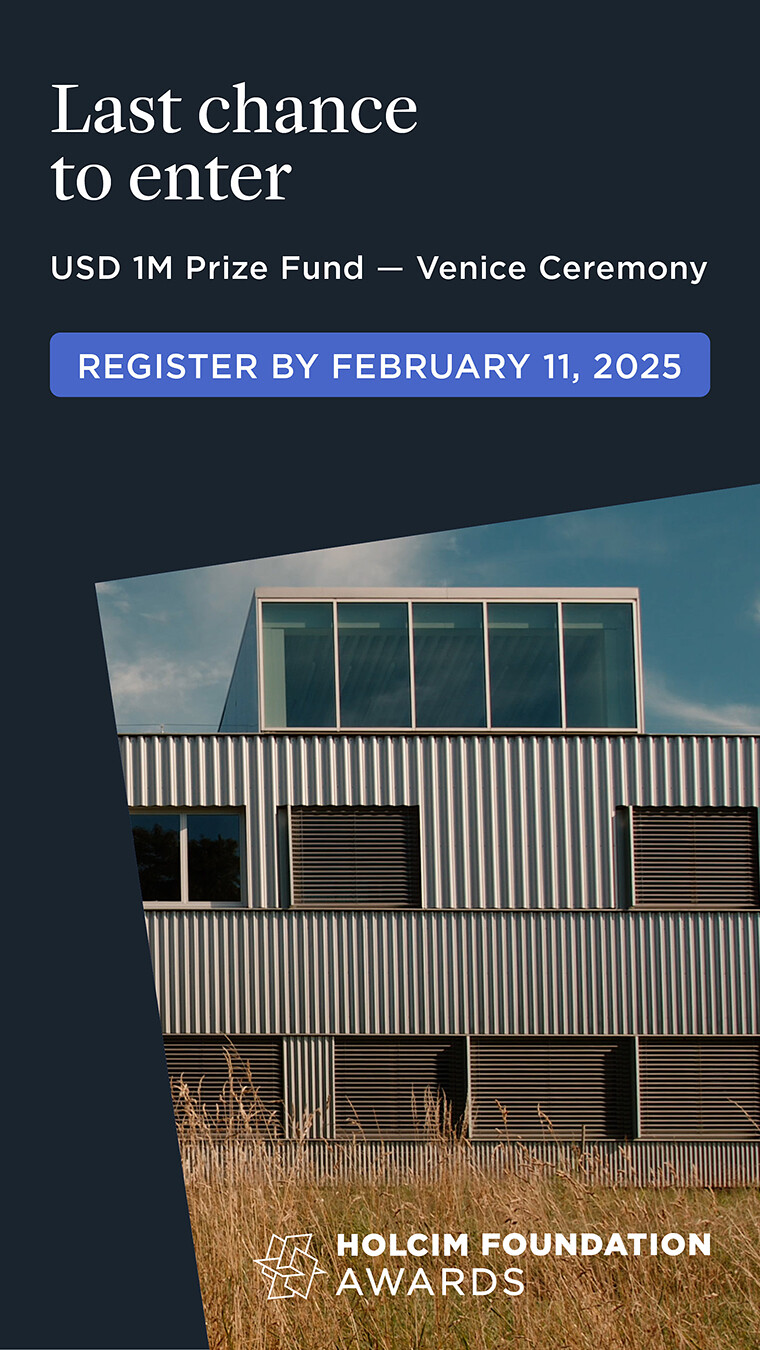Every presence poses a conflict,
he said one afternoon through his mysterious block
of teeth, confidently and methodically chewing …
Extension: estranged …
What Alamar is today—that estranged extension—springs from the La Noria ranch owned by the Velazco family. La Noria, “the watermill,” a word which itself embodies cycles, a machine whose buckets extract pieces of history chained to time, as the sound of its toothed wheel leaves us a howl.
A municipality to the east of Havana, its construction began in 1958. It was originally designed as an exclusive suburb for the bourgeoisie and well-paid laborers. Later, after the triumph of the revolution, its fate took a sharp turn. In the Sixties, it became a residential area for foreign technicians. It was not until ’71, that the Alamar Plan came into being. A Soviet-style urban development project, Alamar began with a rush of workers who arrived with the microbrigade movement and set it up as a model residential area—the only one of its kind in the country. Alamar was visited by presidents, heads of state, and delegates representing other Socialist countries of that era. It represented the idea of the construction of the new man, a product of the revolution, who would conform to strict codes of conduct established by the authorities of civil society.
The poem is born to be projected into the next Era …
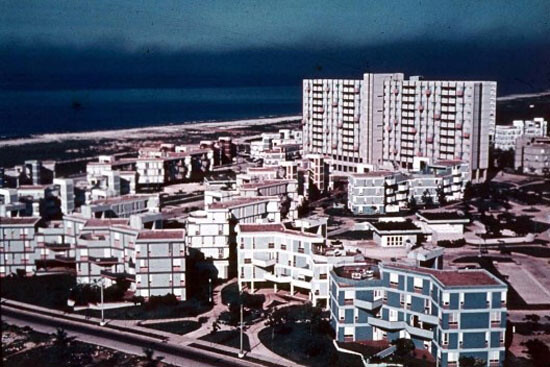

First Movement
This city was founded on red ferriferous soil. Erosive soil lacking in groundwater, dreaming amidst rivers, mountains, the sea and her reefs, masculine and feminine, unmistakably blue, a mirror into which the sky stares for long periods of time. Where the vegetation was broken by the repeated blocks of apartments. I think the never-silent founder and prominent player in the burgeoning real estate industry, Guillermo Alamilla Gutiérrez, had a vision … he pictured, perhaps, the magnificent image of a Royal Poinciana tree (native to the region) in full bloom, before realizing that among the letters of his own name along with those of his dear Margarita, a space of experimental resonance opened up to reveal Ala-Mar: Ala, the wing, a bold new motif completely distinct from the idea of the alligator that hangs over the island; and Mar, the sea, in whose waves he saw wings.1 And just like that, the image was struck in the ether. Dr. Alamilla went after Margarita like Faust following his beloved. He forgot those lands in much the same way that Margarita forgot him, but not before leaving us with a gateway opening to the south, streets paved over an aggregate base, sidewalks, curbs, drains, and technical works like electricity, running water, and the heart which fed the entire housing development: El Batey de Alamilla. He named the areas where the building would take place: Alamar Olimpo—the panoramic view, the river estuary, La Habana, the Capitolio, can be seen from here; Alamar Residencial—within walking distance of the mountain and the coast; Alamar Costa Azul—the blue here tending to transform the reef on an imaginary scale under the Caribbean sun, perhaps because the place itself was imagined as being for pleasures of all kinds. The founder’s dreams expanded upon the obsession of various presidents, who had been planning on developing Eastern Havana as far back as 1908. In 1925, Gerardo Machado launched the Atlantic City Project, in which lands around the site of what is now Alamar were sold to wealthy Havana residents, upper-class Americans, and Hollywood stars. Later, President Prío Socarrás tried only somewhat successfully to take it back, before General Fulgencio Batista, in conjunction with the Italian Mafia (Meyer Lansky and Lucky Luciano, among others), undertook the project and managed to complete the construction of the Harbor Tunnel. This facilitated and gave meaning to the plan—initially put forth by the engineer Dionisio Velasco—of constructing a chain of hotels along the North Coast as far as Varadero.
But as the song says, the comandante showed up and ordered everything to cease.
Buildings as ugly as decrees
the Angel (hand of stone) said, once upon a time,
while smoking a cigar.
100,000 inhabitants from here to there and beyond:
diasporas of the continents.
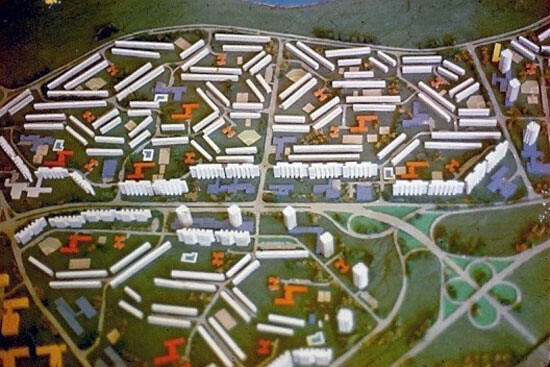

Second Movement
It all began with Máximo (the administrator of the metallurgical factory called Socialist Vanguard) whispering to Fidel Castro about the workers’ grumblings regarding the lack of housing. From that, the Alamar Plan was hatched. The revolution enters with its alchemy and its grand gesture of turning barracks into schools. Everything changed under this procedure: a middle-class Havana suburb was transformed into one for workers and technicians. This was a project supported by the ideology of the New Man and sustained by expressions of exemplary conduct, revolutionary selflessness and dedication. An architectural design reminiscent of the ghettos of Kiev or Moscow. That’s how the microbrigade movement of voluntary labor came to be. This time they entered from the north side of the development with their white helmets, pickaxes, proletarian shovels, truckloads of workers, architects and engineers, teachers and students. The brigades were made up of thirty-four men: eight for planned social works, twenty-six for constructing the buildings for themselves, plus others that would eventually delineate a shimmering, monotonous maze. Alamar maintained the same three zones as it had before, but through revolutionary alchemy the bourgeois poetic names were changed to Socialist Realist ones: what was once Olimpo became the Consejo Popular Alamar Alturas, which included zones 6, 7, 8, 9, 10, and 11; what was once Residencial is now Alamar Playa, consisting of zones 1, 2, 3, 4, and 5; and out of Costa Azul came the Consejo Popular Alamar Este, which covered zones 12 through 25 and extended through Micro X as far as Bacuranao.
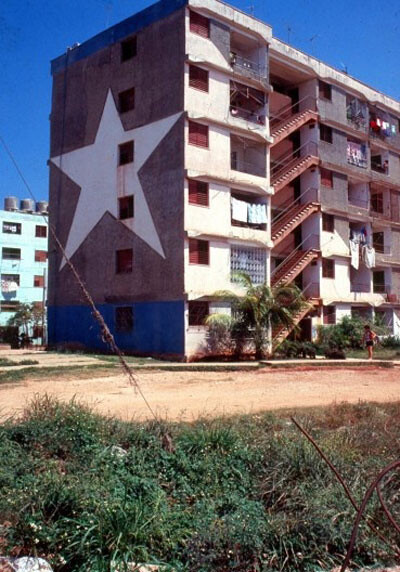

The first inhabitants of the Plan came from all corners of the country, bringing with them their traditions and idiosyncrasies. They saw their needs for housing satisfied in good order, but clashed with the prevailing rules and regulations of a newly founded Alamar. The apartments were issued according to total hours worked, but not before purgative meetings during which the contestants’ dirty laundry was aired in the sun of partisan morality. Great battles that foreshadowed the way artists and intellectuals would be treated during the gray years. In addition to that, there were the union commissions that conducted visits and monitoring surveys to maintain the established order, resulting in an atmosphere of censorship and self-censorship. Things you were prohibited from owning inside the apartments included pets, saints, plaster casts of religious symbols, and images of the Most Sacred Heart of Jesus. Even so, people guarded their protective icons, moving them from the windowsill to the living room as the commissions came and went, despite the fact that there were never any administrative resolutions or bulletins listing these prohibited items.
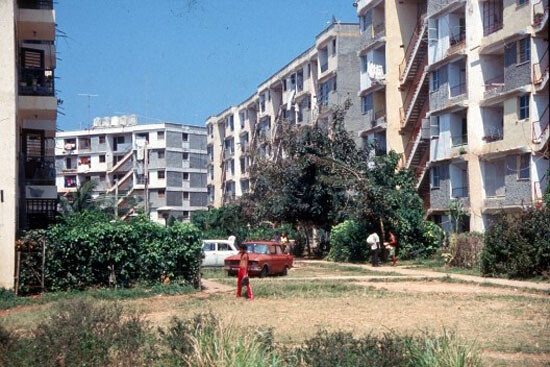

The aura of Magna work was growing, and refugees from war-torn parts of Latin America were arriving along with their families, as were technicians from the Soviet Union and other European Socialist nations. Over four hundred residences were assigned to them. Within just a few years, Alamar’s population swelled to over one hundred thousand. The incipient decade of the Eighties brought with it the oblivion, the key that returns as an indecipherable purpose. The illusion is broken, its days of splendor vanishing like the scent of a flower plucked from the garden. Standards were lost, exemplary conduct and social control gave way to build-your-own shantytowns, which was just another direct response to the urgent need for housing.
Buildings buildings buildings
low-cost housing
people so many people looking for a place to rest their head
silent-restless city … sleep.
Buildings buildings buildings
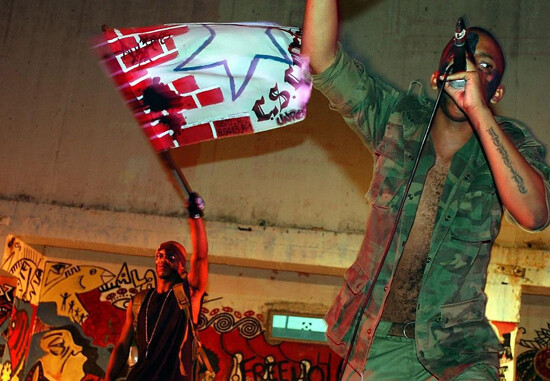

Third Movement
In the late Eighties and early Nineties, this housing development, planted over the remains of another city, became fertile soil. Its tectonic layers of sediment move beyond the bounds of the blueprint that set down for Alamar. Alamar began to draw breath, trying to grasp the inspiration that flowed from her nature, from the layered strata of unforeseen desires and aspirations. We recall that Alamar was not born a living organism but an urban one that evolved socially and culturally in more of a geological than a biological way … it is an experimental monstrosity that calls to mind Mary Shelley’s modern Prometheus. This is the period in which the cultural movements that modified the sleeping city’s controlled perimeters began to appear. The imprint of artists and poets both local and foreign (Chileans, Colombians, Uruguayans, Argentines) generated intense creative activity and this led to the creation to literary workshops where the written word and the visual arts came together, and they were places that attracted great practitioners of verse. The establishment of an atypical space like the Fayad Jamís Gallery for Art and Literature attracted young people from Havana’s various boroughs, who found new expressive resources there, such as the political project featuring the poet María Elena Cruz Varela. The hip-hop movement found a welcome host and reached new heights in this city, with a festival organized by Grupo Uno that brought together designers and artists and gave expression to contrary and alternative voices that galvanized the national discourse. And the performance art group OmniZonaFranca, with their interdisciplinary Poesía Sin Fin, or Endless Poetry, festival, brought the local community into contact with emerging and seasoned poets from within and outside the island. The group that fused writing and performing to intervene in public space created a context for the expression of opinions and to delineate the zones of silence which, years later, I would define as Arte Necesario, or Necessary Art. The phosphorescent trail left by these spirals of creative renewal continues as far as the year 2000. Alamar is a laboratory, a place of heavy rains inundating metropolitan Havana, and attracting attention. There is a rising sun in Eastern Havana. It is true, though, that the fertile abilities of this land to create movements—which take root like wildflowers and are transplanted when they reach middle age—are often drowned out by the prevailing cultural policies. In these cases, the control never truly goes away, and Alamar returns to its arid essence, rooted in its dry, ferralitic soil despite being surrounded by all the infinite waters of creation. Ready to be fertilized once again in the eternal cycle of renovation.
ALAMAR IS THE PLACE
said the Angel
here we live
here we grow
here we connect
with planetary, galactic,
and universal ethers
until they fall
and crash into the meaningless ground …
Cuba is often characterized as an alligator because of its shape. For example, the Communist Youth has a newspaper called El Caimán Barbudo—the bearded alligator. —Ed. note
Translated by Ezra E. Fitz
